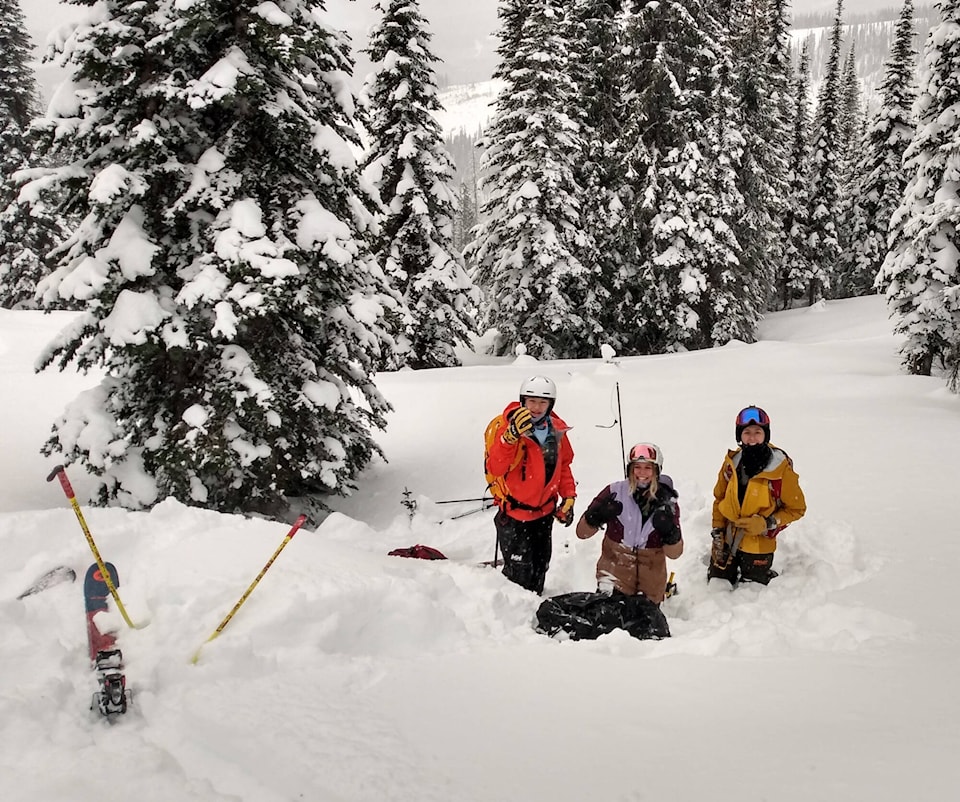Living in a mountain town means the massive outdoors backyard offers many adventurous options.
After a healthy snowpack, the steep slopes beckon travellers into the vast backcountry.
However, adventuring into unsupervised terrain requires skills to navigate the dangers, especially in avalanche terrain.
Avalanches are snow slides that are categorized based on size and likely level of destruction. Learning to identify potential avalanche terrain, understanding the triggers for slides, and offering companion rescue are just a few of the essential skills for backcountry survival.
Created in the 1970s, avalanche safety courses taught industry workers the skills that today anyone looking to duck the ropes and ski out of bounds can benefit from learning. This introductory course offered by Avalanche Canada is a multi day training program designed for recreational backcountry skiers, boards, and adventurers.
Keith Robine, a veteran outdoor instructor, offered students at Seven Summits Centre for Learning the AST 1 course at the end of December. As avalanches are more common in the early season and spring, offering this course at the beginning of the ski season is advised.
“The course doesn’t take the danger out of going backcountry, but it definitely helps improve awareness about the dangers and how to make better route decisions,” said Finlay Smith, a Grade 10 student and Red Mountain Racer.
Students are taught basic skills and discover ways to identify potential dangers in the backcountry.
“The unstable mass that breaks away in a slab avalanche is the scariest. I now know how that happens and plan to avoid that terrain. I also know so much more about how to use the backcountry gear and what to pack,” said Oceanne Verot, a Grade 10 student.
Students learn a balance of classroom theory and then solidify this by exercising field experience during a backcountry training expedition.
“I thought you could outski the avalanche, but the speed is too fast, sometimes up to 200 miles per hour,” said Grade 10 student Roan Slaney-Freer.
“Even I can’t ski that fast.”
Learning to mitigate risk is a critical part of the course. Understanding the slopes and conditions that can result in avalanches is important for avoiding those routes.
No one goes into the backcountry planning to have an accident, but everyone can learn how to avoid unsafe situations and deal with potential disaster.
For further information on avalanche conditions, forecasts, AST 1 course dates, and other general information check out Know Before You Go - Avalanche Canada
